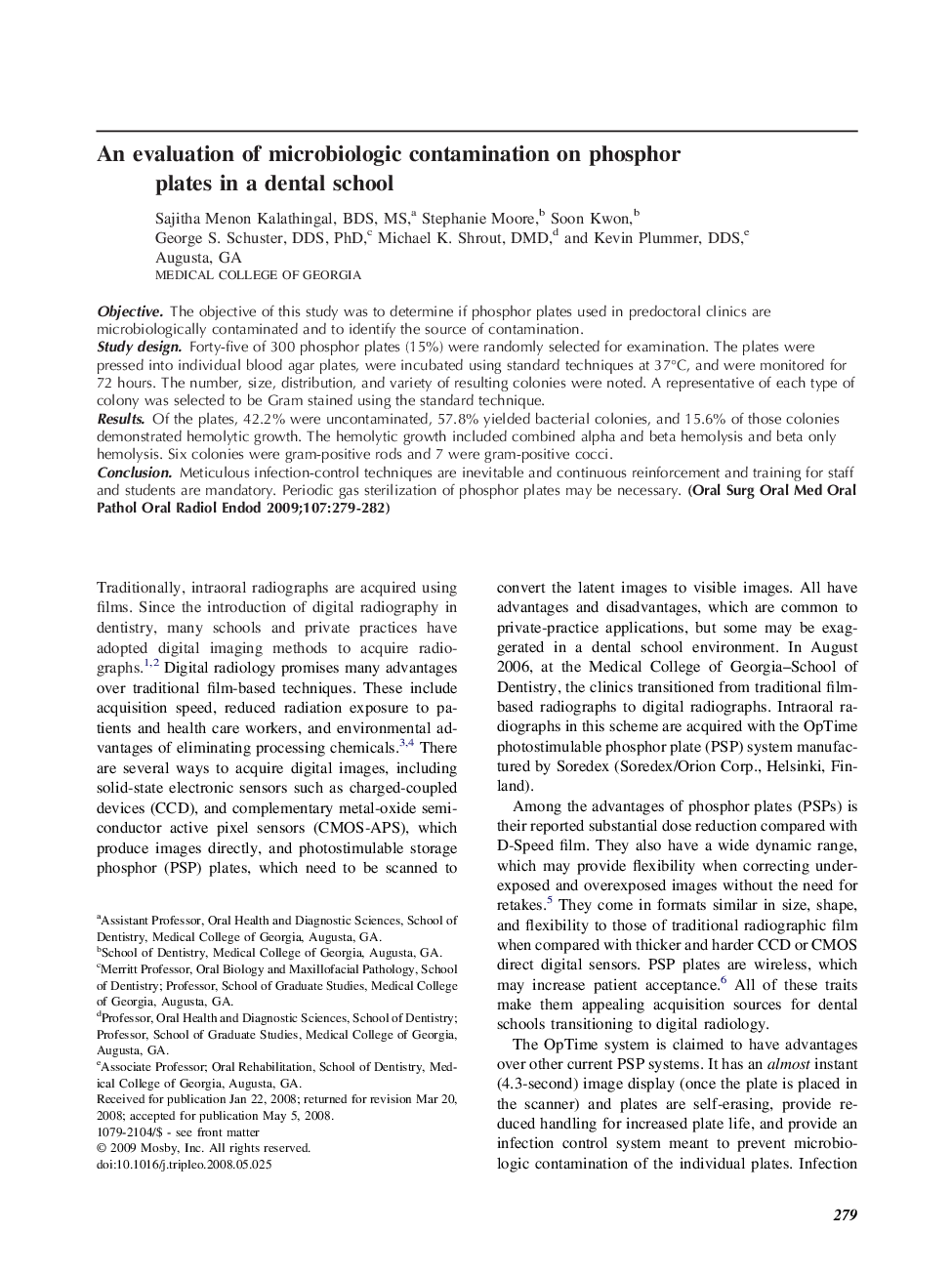| Article ID | Journal | Published Year | Pages | File Type |
|---|---|---|---|---|
| 3168338 | Oral Surgery, Oral Medicine, Oral Pathology, Oral Radiology, and Endodontology | 2009 | 4 Pages |
ObjectiveThe objective of this study was to determine if phosphor plates used in predoctoral clinics are microbiologically contaminated and to identify the source of contamination.Study designForty-five of 300 phosphor plates (15%) were randomly selected for examination. The plates were pressed into individual blood agar plates, were incubated using standard techniques at 37°C, and were monitored for 72 hours. The number, size, distribution, and variety of resulting colonies were noted. A representative of each type of colony was selected to be Gram stained using the standard technique.ResultsOf the plates, 42.2% were uncontaminated, 57.8% yielded bacterial colonies, and 15.6% of those colonies demonstrated hemolytic growth. The hemolytic growth included combined alpha and beta hemolysis and beta only hemolysis. Six colonies were gram-positive rods and 7 were gram-positive cocci.ConclusionMeticulous infection-control techniques are inevitable and continuous reinforcement and training for staff and students are mandatory. Periodic gas sterilization of phosphor plates may be necessary.
